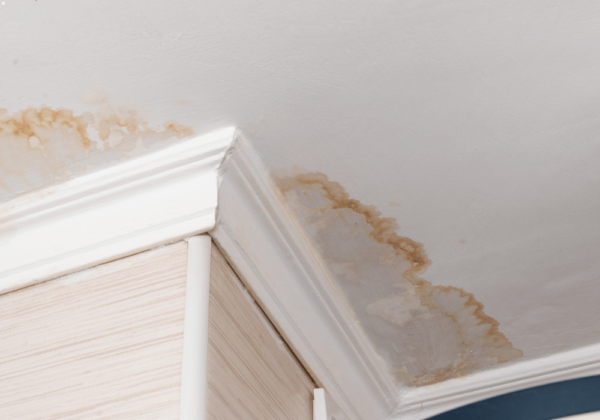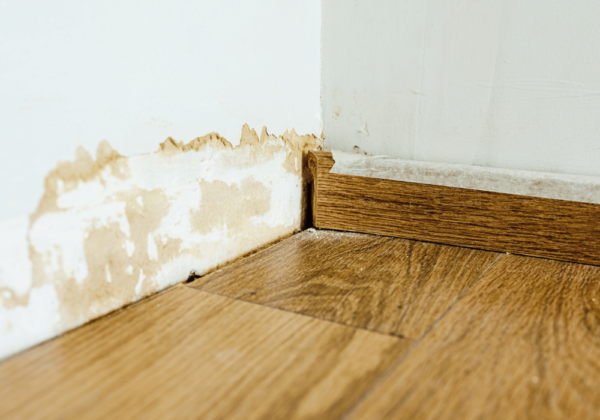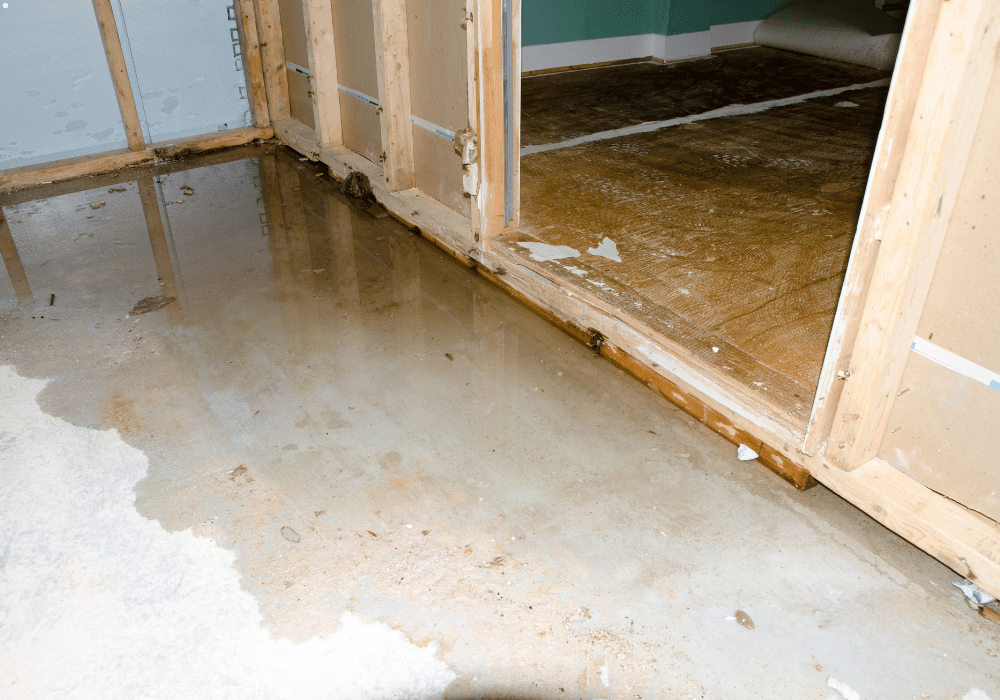In this post, we will explore the various types of water damage typically covered by homeowners insurance, identify potential exclusions, and provide tips on ensuring you have the appropriate coverage.
Types of Water Damage Typically Covered by Homeowners Insurance
1. Sudden and Accidental Damage
Most standard homeowners insurance policies cover water damage that is sudden and accidental. This includes scenarios where water damage occurs as a result of unexpected events. Some examples are:
- Burst Pipes: If a pipe suddenly bursts and causes water damage, your policy will usually cover the repair costs and any resulting damage.
- Plumbing Failures: If a plumbing malfunction leads to water damage, such as a broken water heater or a malfunctioning washing machine hose, you’re likely covered.
- Accidental Overflows: Unintended overflow from a bathtub or sink, if it results in damage, is typically covered by your policy.
2. Weather-Related Damage
Certain types of weather-related water damage are also covered under standard homeowners insurance policies. These include:
- Rain and Snow: If rain or snow enters your home due to damage caused by a covered peril—like a tree falling on your roof during a storm—your insurance may cover the resulting water damage.
- Ice Dams: When ice dams form on your roof, they can cause water to seep into your home. Damage from ice dams is generally covered, provided you have taken reasonable steps to prevent them.
3. Water Damage from Fire Extinguishing Efforts
 If your home suffers fire damage, any water damage resulting from efforts to extinguish the fire is typically covered by your homeowners insurance.
If your home suffers fire damage, any water damage resulting from efforts to extinguish the fire is typically covered by your homeowners insurance.
Types of Water Damage Not Typically Covered
1. Flood Damage
Standard homeowners insurance policies do not cover flood damage. If you live in an area prone to flooding, you will need to purchase a separate flood insurance policy through the National Flood Insurance Program (NFIP) or a private insurer. Flood damage includes incidents like:
- Mudslides
- River overflows
- Coastal storm surges
2. Gradual Damage
Gradual damage caused by wear and tear, poor maintenance, or long-term leaks is generally not covered under a standard homeowners insurance policy. Examples include:
- Leaky Roofs: If your roof has been gradually leaking over time and causes water damage, your insurance is unlikely to cover the repair costs.
- Seepage and Mold: Slow seepage and mold that develop over time are typically considered preventable with proper maintenance and are not covered.
3. Sewer and Drain Backup
Damage caused by the backup of sewers or drains is not usually covered under a standard homeowners insurance policy. However, many insurers offer optional add-on coverage for sewer and drain backup, which can be worth considering.
Ensuring Comprehensive Protection
Review Your Policy
The first step to understanding your coverage is thoroughly reviewing your homeowners insurance policy. Pay close attention to the details around water damage and note any exclusions or limitations.
Consider Additional Coverage
Based on your location and risk factors, consider supplementing your standard policy with additional coverage options:
- Flood Insurance: Essential if you live in a flood-prone area.
- Sewer and Drain Backup Coverage: Provides additional protection against backup-related water damage.
Regular Maintenance
Conducting regular maintenance on your home can prevent many types of water damage. This includes:
- Inspecting and repairing the roof
- Cleaning gutters and downspouts
- Monitoring and maintaining plumbing systems
- Installing a sump pump if your basement is prone to flooding
Utilize Technology
Investing in water leak detection systems can help identify potential issues before they become significant problems. Smart home technology can alert you to leaks, frozen pipes, or excess moisture, allowing you to take immediate action to prevent damage.
How To Restore Water Damage In My Toronto Home?
Restoring water damage can be a daunting task, but with the right approach and professional help, it can be managed effectively. If you’re facing water damage in your Toronto home, follow these steps to restore your property:
 Immediate Steps to Take
Immediate Steps to Take
- Ensure Safety: Before you begin any restoration work, ensure the safety of everyone in your home. Turn off the electricity and gas supply if there’s a risk of electrical hazards or gas leaks.
- Stop the Water Source: Identify and stop the source of the water. This might involve turning off the main water supply or repairing a burst pipe.
- Document the Damage: Take photos and videos of the affected areas immediately. This documentation is crucial for insurance claims.
Drying Out Your Home
- Remove Standing Water: Use pumps, wet vacuums, or buckets to remove standing water as quickly as possible. Standing water can cause further structural damage and promote mold growth.
- Dry the Area: Open windows and use fans, dehumidifiers, and heaters to dry out the affected areas. This process can take several days, so it’s essential to be thorough.
- Remove Damaged Materials: Dispose of water-damaged materials like carpeting, drywall, and insulation. These materials can harbor mold and bacteria.
Cleaning and Disinfection
- Clean Surfaces: Clean all affected surfaces with soap and water. For hard, non-porous surfaces, use a mixture of 1 cup of bleach to 1 gallon of water to disinfect.
- Prevent Mold Growth: Apply mold inhibitors to prevent mold growth on cleaned surfaces.
Repairs and Restoration
- Assess Structural Damage: Check for structural damage to your home’s foundation, walls, and roof. If there is significant damage, it’s essential to hire professionals for repairs.
- Restore the Interior: Install new drywall, flooring, and insulation as necessary. Ensure that all materials are completely dry before installation to prevent mold growth.
- Repairs and Updates: Consider upgrading older plumbing systems and installing water-resistant materials in areas prone to water exposure, such as basements and bathrooms.
For comprehensive water damage restoration, it’s often best to hire professional restoration services like Emergency Flood Response. They have the expertise, equipment, and experience to handle severe water damage efficiently in the Toronto area. Restoration specialists can collaborate with your insurance company to expedite claims and ensure your home is returned to its pre-damage condition.

